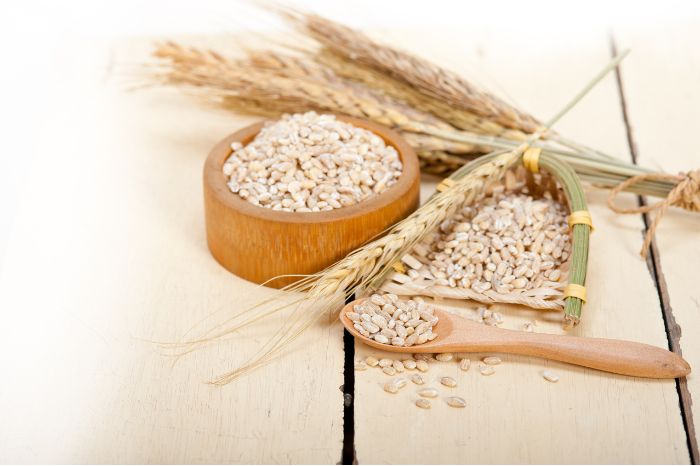Is Barley Good For Diabetes? What We Think
We bring barley as the most beneficial diet for all ages. Can barley help control diabetes?
Table of Contents
Yes, we provide evidence of how it regulates blood sugar levels, reducing the risk of diabetes.

| Read: Healthy Heart Tips
Can Barley Control Diabetes?
People over thirty often have problems with diabetes because their blood sugar levels are too high.
It’s not easy for a diabetic to avoid foods they love.
For people who love sweets, it’s difficult to control sugar. However, in type 2 diabetes, it’s important to control the diet
- Some studies have found that eating whole grains instead of simple sugars is the best way to control diabetes.
One of the many options available to diabetics is barley.
- Barley is a rich source of carbohydrates and therefore a good option against diabetes
Barley
Hordeum Valgar, or barley, has a long history dating back 10,000 years when it was first cultivated in the Middle East.
- Whole grain barley, a staple of the Ethiopian diet, is a rich, fiber-rich food.
- Diet is very important for type 2 diabetes
A healthy diet is important for all types of diseases.
- Those who incorporate a proper diet plan into their lives will enjoy a new and healthy life instead of taking many medications every day.
Although barley is a traditional food, it’s many advantages over traditional whole grains. This nutrient-rich diet offers many health benefits.
When it comes to diabetes, barley has proven to be a useful aid in the fight against this common disease. It protects against diabetes in many ways.
- Barley is very helpful for people who’ve diabetes or are at risk of developing diabetes.
- First, it’s a tremendous function in lowering blood sugar levels.
- Secondly, it keeps the insulin level in the blood at an optimal level, so the risk of developing diabetes is lower.
It also increases the insulin sensitivity of the body. Barley is a low glycemic food that doesn’t raise blood sugar levels when eaten.

| Read: Heart Disease-Early Sympotms
- Beta-glucan is a soluble fiber in this whole grain that slows the absorption of sugar into the bloodstream.
It binds the sugar with the digestive tract and stops mixing into the blood. Studies report that taking barley daily as the central part of the meal can reduce glucose levels by up to 50%.
- Barley is high in carbohydrates that, when digested, convert into glucose which goes into the bloodstream. Thus, it helps maintain energy and cellular functioning without raising blood glucose levels.
The fiber-rich diet digests slowly in the body. It also controls the appetite when it remains in the stomach for a long time. It has a large amount of magnesium that is incredibly beneficial for diabetic patients.
- A study has reported that barley is more effective against diabetes than oats as it reduces the blood sugar level by up to 60% compared to oats, that only decreases up to 40%.
The beta-glucan present in barley has a remarkable effect in lowering the post-meal blood sugar level compared to other types of cereal.
Its low GI (glycemic index) score certifies its positive impact on diabetes. It only scores 28, the lowest score of all available whole grains.
Some other health benefits of barley-According to studies:
- The whole grain ‘barley’ is very effective in weight loss programs. It controls the appetite and provides the feeling of fullness by being low in caloric intake.
- So it cuts down the extra calories without raising hunger pans. Barley also improves digestive tract health by stimulating the gut’s beneficial bacteria.
- Barley release good hormones in the body that helps maintain the body functioning properly. It also reduces the risk of chronic diseases and cancer.
- The human body cannot digest fiber instantly, so any diet rich in high fiber adds volume and remains in the stomach for a long time. It does not increase caloric intake, so it benefits people on a weight-loss journey. People who take barley in the morning feel less appetite at lunch and eat less.
- Barley lowers the cholesterol level by 10%, thus improving health with less ‘bad LDL.’ It has a healthy carbohydrate content that provides positive energy to the body. Suppresses the appetite and prevents overeating.

| Read: Heart Disease – Myths And Facts
- It increases the GLP-1 (Glucagon-Like Peptide 1) which stimulates the secretion of insulin and carried glucose from the intestinal wall. It inhibits the accumulation of triglycerides and cholesterol in the liver, thus preventing atherosclerosis and heart disease.
- It works as an antioxidant preventing inflammation. Lowers the blood pressure and increases the elasticity of blood vessels, thanks to the presence of selenium, magnesium and potassium.
- It improves immunity, prevents degenerative diseases and promotes longevity.
How to add barley into the diet
One can easily use barley in the diet in many ways. These ways are:
- Eating barley in the hulled form, which is the whole-grain barley with the removal of the outer hull only.
It takes longer time for cooking when compared to other forms of barley. It takes 1.5 or two hours for proper cooking.
- When barley is steamed partially with hull removal, it is called pearl barley. It is less in nutrients than hulled barley but has good taste.
Pearl barley takes only one hour to cook.
- Barley flakes are another option in flattened and sliced form, just like rolled oats.
They are more effortless to cook than pearl and hulled barley.
- One can also use barley as grits.
It involves toasting and cracking barley for a few minutes.
How to cook barley
- First of all, rinse the barley in tap or cool water
- Remove hulls if you want
- Cook it in three times more water than the amount of barley. (Take three cups of water for one cup of barley).
- When they are properly cooked, remove them from the heat and enjoy

Takeaway
- Barley is a carbohydrate but is high in fiber content. Its fiber content slows the release of glucose into the blood, which protects against diabetes.
So one should add barley to his diet daily. There are multiple recepies available on the internet that includes barley as a central ingredient, so if you can eat it alone, take it with some other beneficial ingredients.
- Moreover, barley grains can be a healthy part of your diet and they are used in the production of bread, beer, soups and other foods.
- It ‘s not a cure and should not replace treatment, but it helps to mitigate the symptoms and prevent complications.
FAQs
1. Can I take carbohydrate source barley in diabetes?
Carbohydrate is a crucial nutrient when we talk about cholesterol and diabetes management.
Some people avoid carbohydrates in these diseases, but studies reported that natural carbohydrates like whole grains (oats and barley) aid in controlling blood glucose levels and bad LDL cholesterol levels.
These grains provide some other benefits too.
2. What are the benefits of eating barley with type 2 diabetes?
Barley’s low glycemic index and ability to regulate insulin hormone make it suitable for the treatment of Type 2 diabetes.
3. Can barley help lower blood sugar levels? Does barley reduce blood sugar?
Barley is a great choice if you are looking for a way to control your sugar level and have diabetes.
4. Is barley gluten-free?
No, barley is not gluten-free, however, the protein gluten is very low in amount.
5. Is barley a highly nutritious grain?
Yes, barley is packed with high amounts of fiber and a number of vitamins and minerals. The fiber in barley can help reduce cholesterol and control blood sugar levels.
6. What type of barley is best for diabetic?
Whole grain barley is very high in dietary fiber, which helps to slow the digestion of food and maintains a healthy blood sugar level because of its high level of magnesium.
Fiber is a key component in the diets of diabetics and people at risk for diabetes because it allows glucose levels to be controlled.
7. What is the side effect of barley?
It is generally safe, it can cause bloating or gas but not any serious side effects.
Consuming barley might cause an allergic reaction in people who are sensitive to other cereal grains, including rye, wheat, oat, corn and rice.


